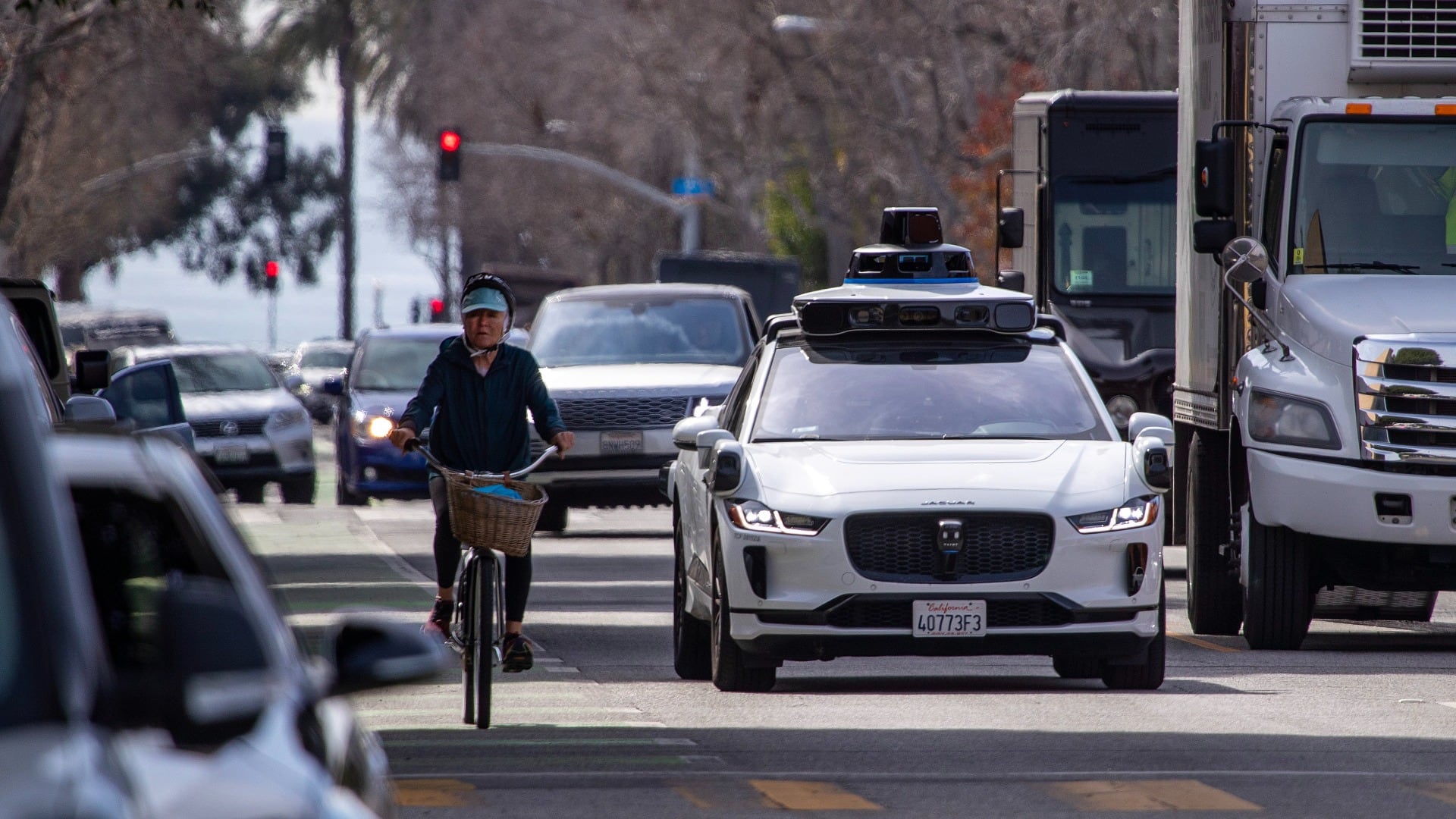Once upon another time, the movie Back to the Future Part 2 gave us a world with futuristic forms of transit: flying cars, and a skyway above the 405 in Los Angeles. The year? 2015. Now, in the real world, nearly a decade later, we are taking baby steps toward that fantasy: with self-driving cars. That’s why when I learned that Waymo, formerly known as Google’s “Self-driving car project,” announced that its self-driving cars were now live in Los Angeles for folks to experience — on the road, not in the air, I leapt, albeit nervously, at the opportunity.
Google has been developing these “robotaxis” for nearly a decade. They have slowly been debuting in Phoenix and select major cities throughout the U.S. The rollout is not currently across the entirety of Los Angeles — with the map of available spaces only in small portions, spanning from West Los Angeles in Santa Monica and Venice to downtown Los Angeles. When I first arrived in Los Angeles nearly two decades ago I remember writing directions on Post-Its and putting them on my dashboard to navigate.
My dad, a Boomer, would chime in further backward opining about how this is a long way past the days of navigating the city in a Thomas Guide. Thankfully, I live close to one of the border areas where I could get a ride, so I walked over to a local organic food cooperative store, the Co-Opportunity Market in Culver City, and waited with curiosity for my first ride.
Notes About My Ride Choice
I picked this area as a place to start due to my familiarity with it, but it also provided me with an opportunity to see how the driverless vehicle handled the many bus and bike lanes within the area. Downtown Culver City has bus lanes, bike lanes and divider cones that has been notoriously debated by local human drivers and residents who do not drive alike. Another thing I wanted to test the car on was how it managed traffic during peak driving hours. I planned my ride specifically with this in mind. There is nothing like hitting rush hour in L.A. in a driverless taxi.
In a taxi without a driver, it was just me, the car and the open road. Gone were the moments of awkward or forced conversations with a random driver. There was no one to hear my existential screams about anything for a full forty-five minutes. Readers, that bit of freedom was honestly a bit glorious.
First Impressions
The car took 25 minutes to arrive. And it didn’t arrive in front of the co-op, nor in the adjacent parking lot, but in a cul-de-sac one street over from the grocer. I had to walk to it, but the app provided directions as to where to meet the car, so I knew exactly where to go. Like other driving apps, Waymo said that it would wait five minutes before it left.
At times of heavy traffic, it might be nice to see a human rideshare driver recommend using a nearby cul-de-sac to prioritize safety and ease, but in a fast-paced city with impatient riders and folks who might be carrying a bit, I’m not shocked that some drivers might pull into the parking lot next door as there isn’t accessible parking in front of it. Getting that notification telling me exactly where to go, rather than me assuming where it would show up, was helpful. Not every human rideshare driver will give their passengers that kind of notice even if they don’t see places to park when getting there initially. A standard Lyft or Uber rider might then instead be searching for their car as time passes and get met with a cancellation fee if they can’t find it otherwise.
The car was parked curbside with a giant exterior light displaying my initials. It was a white Jaguar — a standard and a huge upgrade to the Honda Versas that rideshare drivers tend to show up in. Walking around the car, I noticed several cameras placed on both sides, as well as several within its interior. These are for safety matters, and Waymo’s user policy states that they are not using your data inside other than to assist with the driving of the vehicle.
Starting the Ride
It's the rider's choice whether you want to sit in the front or the back — with screens and audio welcoming you. The vehicle stated my first name, announced my destination and informed me to buckle my seatbelt before the ride started. These screens are also used throughout the ride for necessary communication (if a safety issue arises), entertainment and real-time navigation views. I got in, confirmed my destination on the screen located on a panel located in the middle of both the back and center console areas, buckled up and was on my way to The Last Bookstore, an independent bookstore in downtown Los Angeles.
The Ride
After the car got out of the cul-de-sac, the scary adventure started! The first part of my journey involved crossing several bus lanes and cones, and I was pleased, and more than a little relieved, that the car rode smoothly through those obstacles. It’s one thing to put your life in someone else’s hands. It’s another to put it entirely in technology.
Once it moved past those obstacles outside Culver City, the car continued toward downtown Los Angeles. Watching the steering wheel move independently as it maneuvered through the streets left me feeling that I was living in a science fiction novel. It was both exciting and nerve-wracking. At several points during the ride, we ran into even more obstacles.
The car navigated across dips in the road, pedestrian crossings, busy intersections with left turns, and even a few less-than-patient drivers who cut the car off or honked from behind. (Who would have thought that would happen in Los Angeles, right?)
Patience Required
The autonomous car isn’t highway-worthy (which, for a test run, was all right by me!), and it required some patience as it navigated the many surface streets of West Los Angeles. A normal car service would typically take 20 minutes or so (yes, the Clueless cliche still often rings true), but with Waymo it took an aching 45 minutes.
Helpfully, however, the ride time was shown on the console screens both in front and in back, giving me minute-by-minute details throughout the ride.
All Eyes on the Car and Its Passengers
In a town full of A-listers, the car does give off its own level of celebrity — as it’s a spectacle to behold. Folks tended to be curious about the car. I had eyes on me throughout my journey, with several people pulling out their phones to film the car. Passersby approached me to ask about how I got to ride in it.
Ending the Ride
The car informed me when I was nearing my destination, with audio instructing me to gather up all my belongings. This notification came up a few minutes beforehand, giving me ample time to prepare for my exit. When I exited, it was very simple. After coming to a stop at the curb, it directed me to wait until it was safe to exit, the interior lights came back on and audio thanked me before directing me to close the door properly as I left.
The car stayed briefly before it went on its way. Voilà, my first driverless experience had concluded.
The Bad
For the most part, the car navigated obstacles pretty well, although a few places felt like a close call. In one intersection where the Waymo car was turning left in traffic, the car was a little close for comfort to other vehicles. At one point we got cut off by another driver and the reaction time of the Waymo car left something to be desired. Although the car had multiple charging ports, it still needs improvement. The screen in the back has USB-C and lighting cable ports, but it does not have an old-school USB charging port.
It turns out that one is at the front seat, but it wasn’t immediately obvious, not to mention hard to access from the back seat. I sadly found this out when I took my seat belt off in the back seat to access the front USB cable port. I triggered the in-seat sensors, which resulted in Waymo support calling to check on me when I moved to do it. The check in was appreciated but could have been avoided by having a USB charging port in the back.
The Final Verdict
As cool an experience as the ride was, I have mixed feelings about it. A part of me really enjoys that we are getting closer to the future that was promised by science fiction. The ride felt smoother and better than several of the car rides I’ve taken with humans — in Los Angeles, San Francisco and even my suburban hometown of Joliet. Yet in other ways I’m unsure how comfortable I would be as a passenger moving through a freeway, highway, or other high-speed route in the Waymo car.
In all, while a trip from a grocery store to a bookstore might be all fine and well, I don’t feel the future is completely ready for this.
Jennifer Stavros is a Los Angeles-based freelance culture writer who covers technology, politics, and lifestyle.









